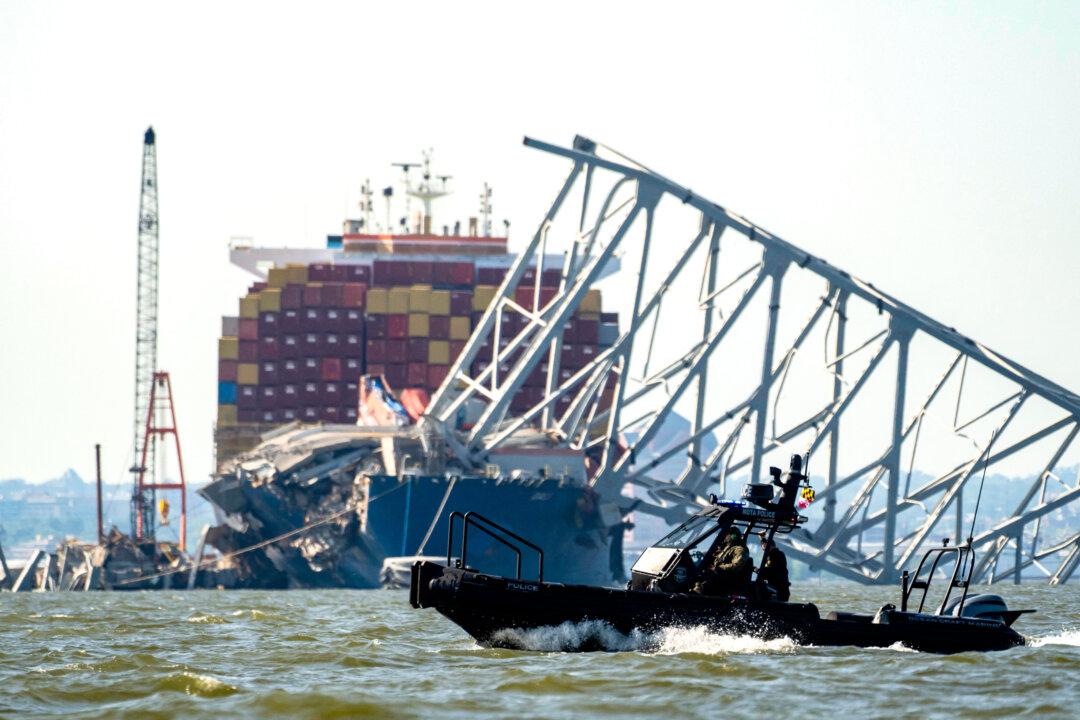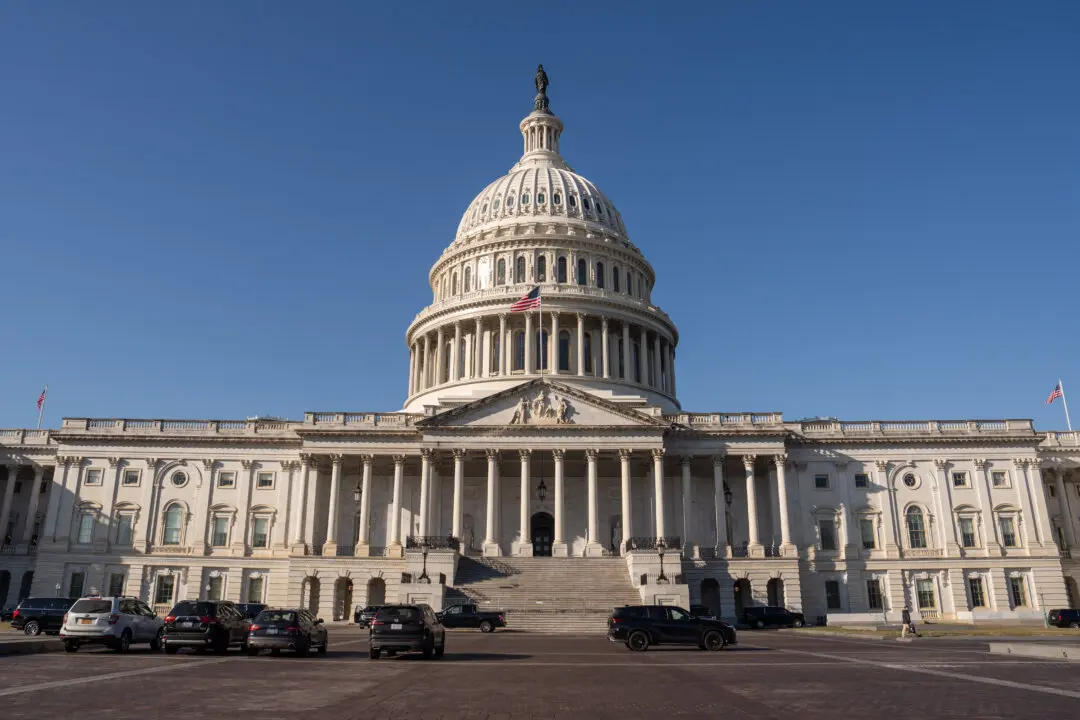A May 14 preliminary report by the National Transportation Safety Board (NTSB) appears to confirm claims by shipyard workers that the 95,000-ton cargo ship lost power repeatedly before crashing into Baltimore’s Francis Scott Key Bridge on March 26, killing six and shutting down the ninth-busiest port in the United States.
Ship That Hit Baltimore Bridge Had Electrical Failures Before Leaving Port, NTSB Says
NTSB preliminary report confirms what shipyard workers have claimed—a massive containership was struggling in port to keep its lights on.

A Maryland Transportation Authority patrol boat makes a pass in the waters of the Patapco river near where crews were getting ready to conduct a controlled demolition of a section of the Francis Scott Key Bridge resting on the Dali container ship in Baltimore on May 13, 2024. Roberto Schmidt/AFP via Getty Images
John Haughey is an award-winning Epoch Times reporter who covers U.S. elections, U.S. Congress, energy, defense, and infrastructure.
Mr. Haughey has more than 45 years of media experience. You can reach John via email at [email protected]
Author’s Selected Articles




